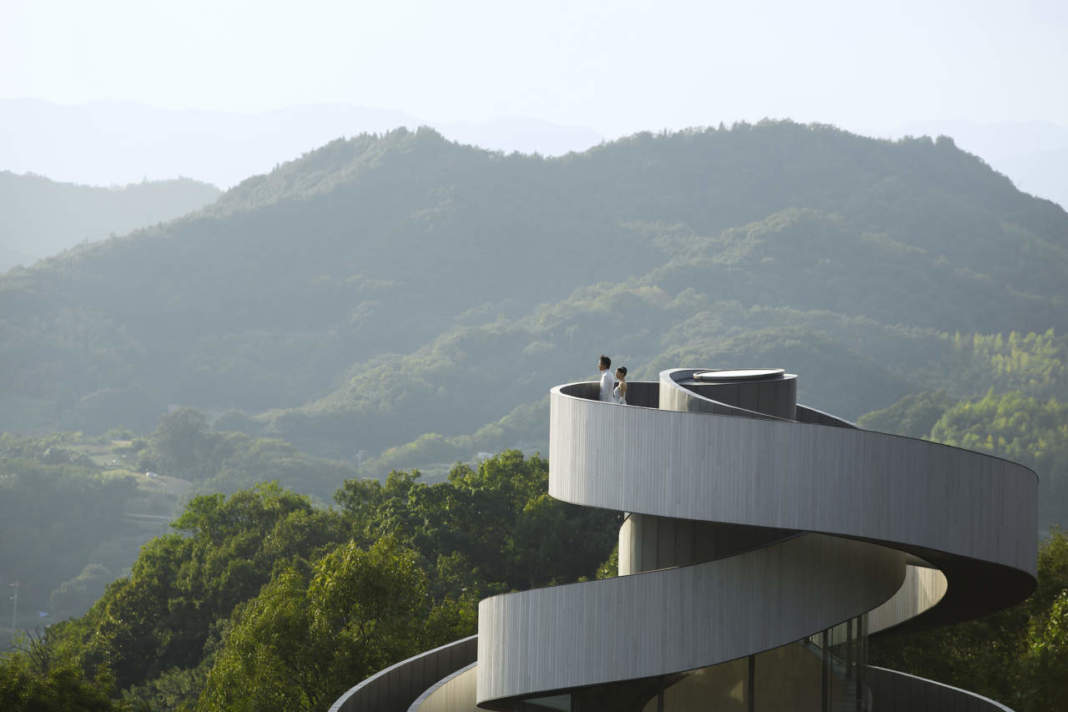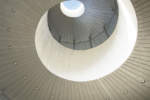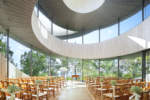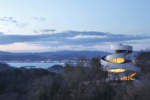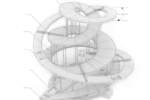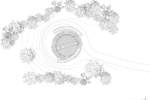architect: Hiroshi Nakamura
location: Hiroshima, Japan
year: 2014
This wedding chapel stands in a garden of a resort hotel, “Bella Vista Sakaigahama,” in Onomichi, Hiroshima. The site is midway on a hill enjoying a panoramic view of the Inland Sea of Japan. By entwining two spiral stairways, we realized a free-standing building of unprecedented composition and architecturally embodied the act of marriage in a pure form. A single spiral stairway would be unsteady in a horizontal direction and is prone to vibration in a vertical direction, hence, very unstable. By joining two spiral stairways so that one supports the other, we produced a free-standing structure.
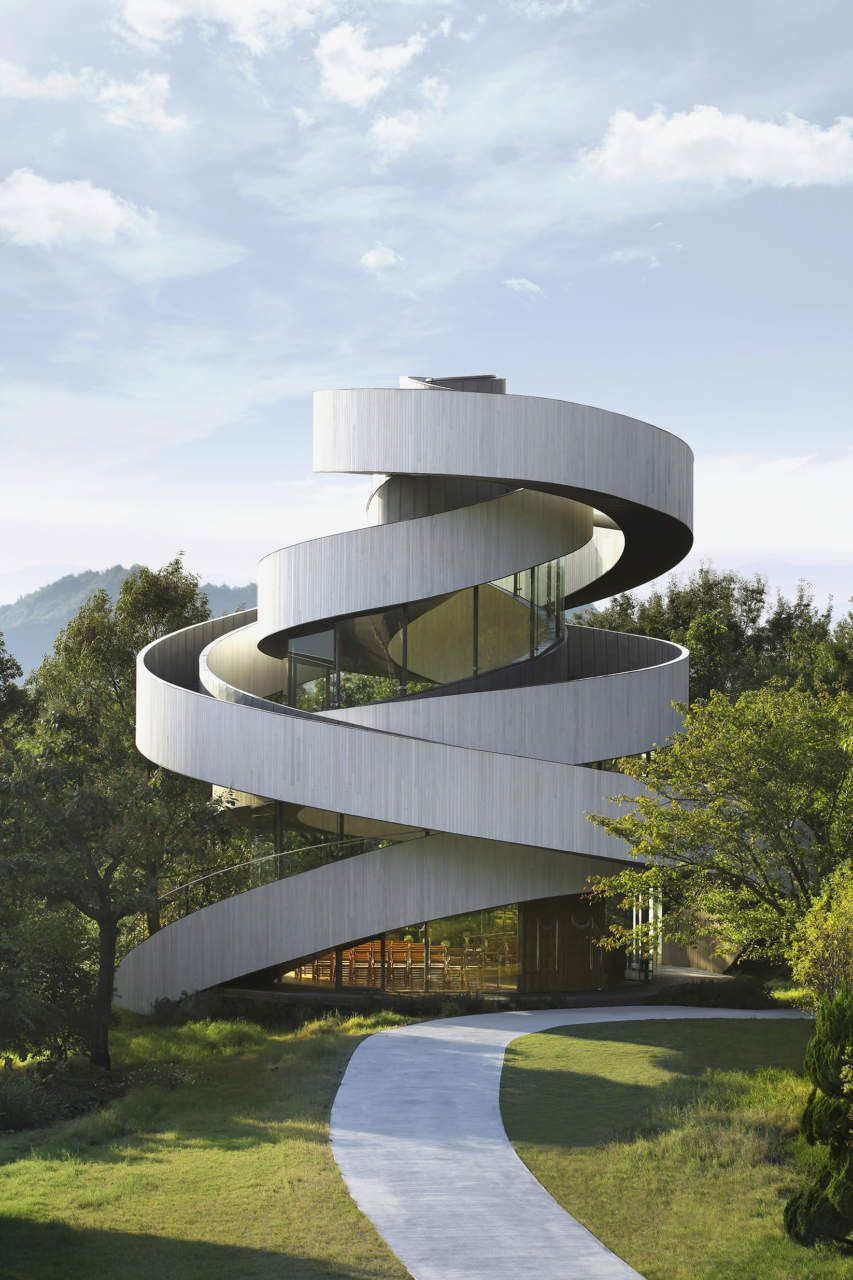
Just as two lives go through twists and turns before uniting as one, the two spirals seamlessly connect at their 15.4m summit to form a single ribbon. At the core of their movement is a chapel where the people who have supported the bride and groom are waiting. The chapel aisle looks toward an existing symbol tree. The altar stands before the tree, and 80 seats are positioned for views to the ocean through the trees. Ordinarily, a building is composed of distinct elements: roof, wall, and floor. Here, however, the entwining stairways perform as roofs, eaves, walls, and floors to produce the building’s spaces. The stairways widen in breadth in response to location and function, such as at the summit where the couple meets, in directions having fine views, and in places where the eaves must be deep to shield the interior from the sun. The building’s exterior is finished in upright wood panels, painted white so as to deepen in beauty as time passes, and titanium zinc alloy, a material resistant to damage from the sea breeze and pliable enough to be applied to curvature.

Employing the zinc alloy on the coping, walls, ceiling, and window sashes enabled a simple design unified by means of a single material. The building type of wedding chapels has always followed a route configuration. The bride walks down the aisle with her father, and after the ceremony, the same aisle becomes a route of departure for the bride and groom. In the process of walking this path, every step awakens memories and emotions. Fortunately, in this chapel, the ceremony also takes form as the bride and groom climb separate stairways to meet at the top, ask for heaven’s permission to join as one, and declare their marriage.
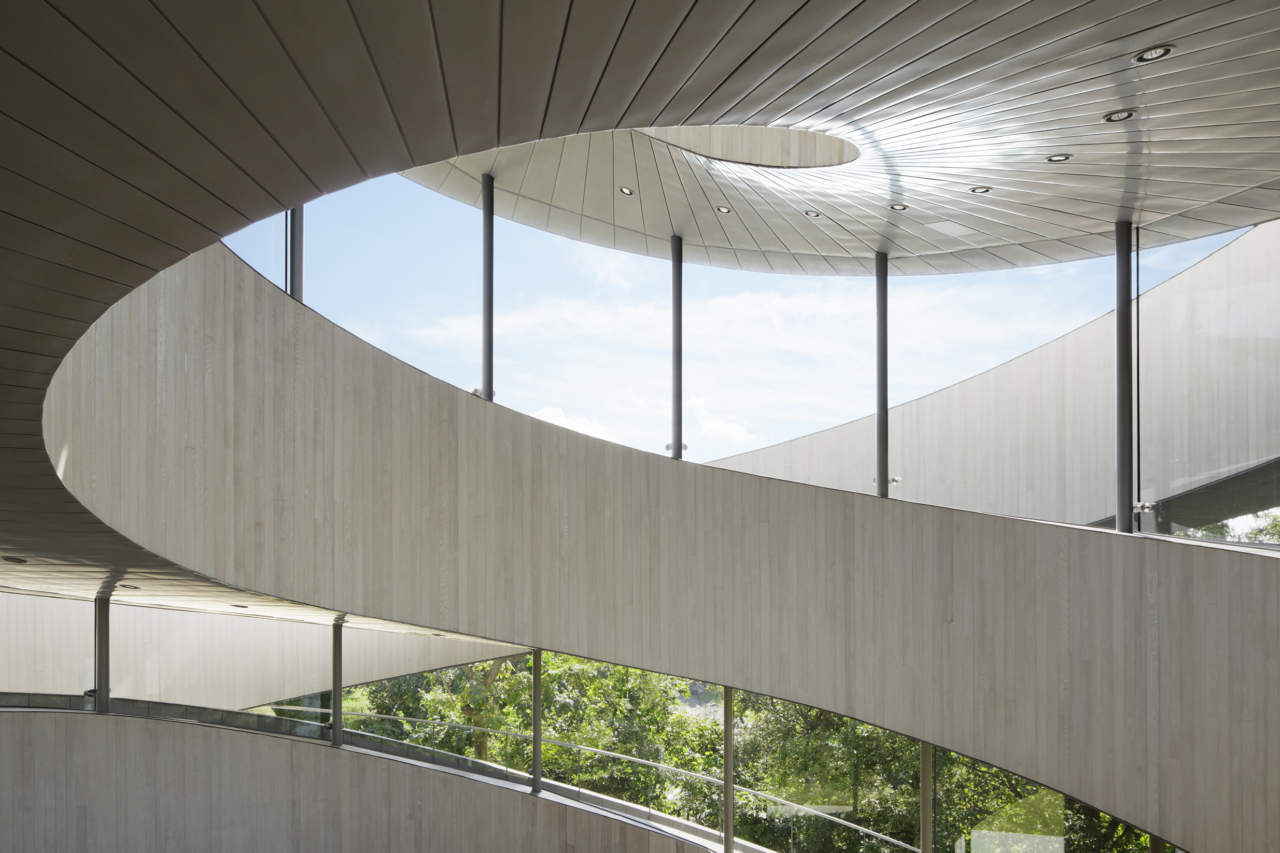
The two, who have lived separate lives, then walk back down the stairway together. The simple building is composed only of paths, along which sceneries of ocean, mountains, sky, and distant islands successively appear and disappear.
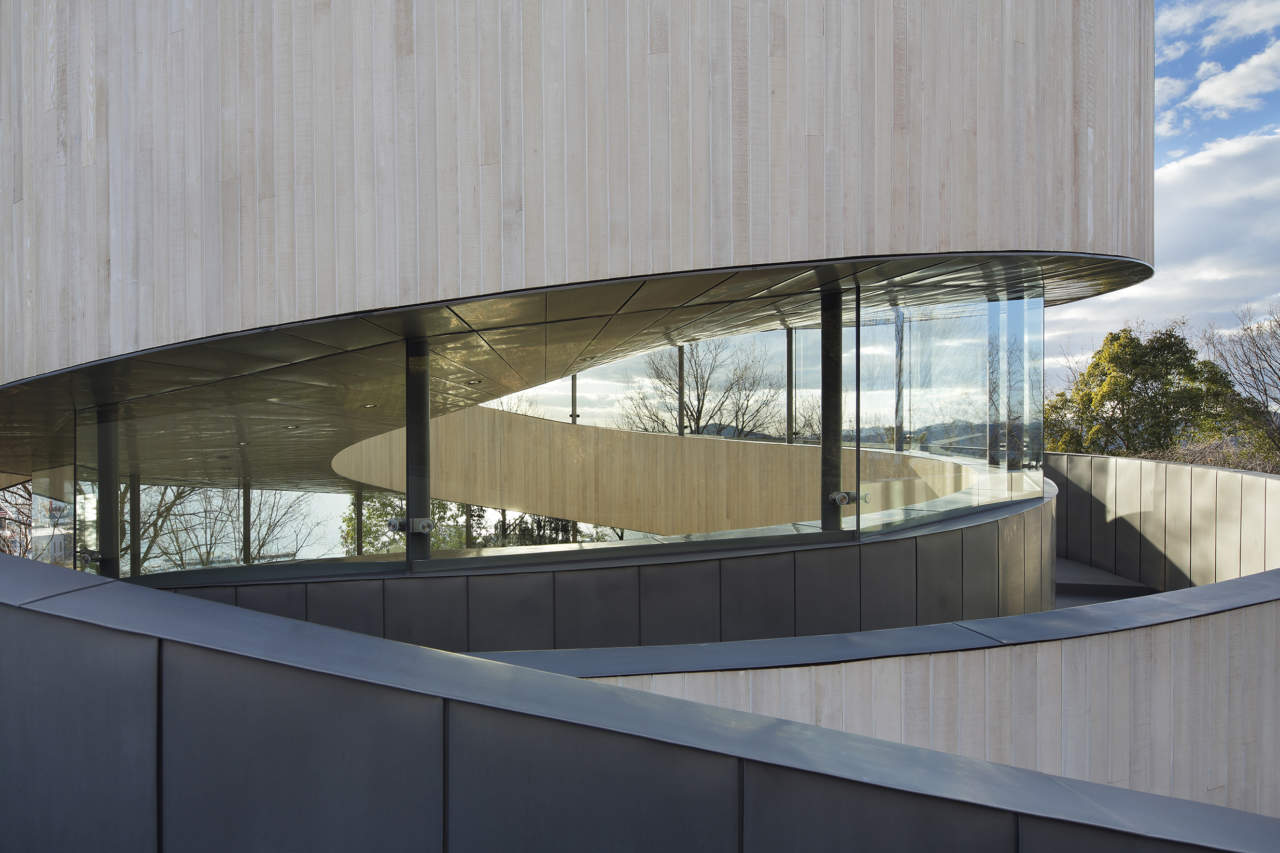
Although it is only a small building, we endeavored to accommodate the emotions of the bride and groom and the thoughts of the celebrants by extending the aisle to a total length of 160 m and expanding the range of experiences.
architect: Hiroshi Nakamura & NAP
location: Fukuyama-city, Hiroshima, Japan
project: 2009-2010
completion: 2014
client: Tsuneishi Holdings Corporation
associate architect: Ikuhide Shibata/ Arup
site area: 3000 sqm
building area: 72.2 sqm
floor number: 1 story above the ground
construction: steel construction
photos: Koji Fujii/ Nacása & Partners Inc.


